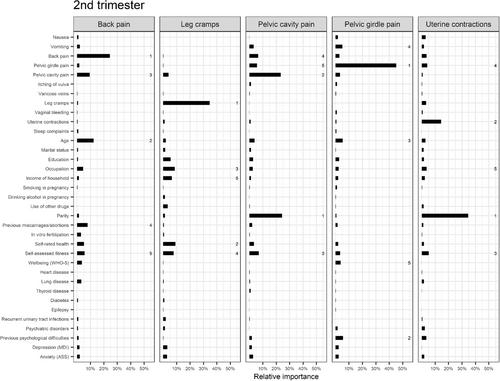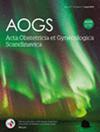Factors in early pregnancy predicting pregnancy-related pain in the second and third trimester
Abstract
Introduction
Pain during pregnancy affects women's well-being, causes worry and is a risk factor for the child and the mother during labor. The aim was to investigate the relative importance of an extensive set of pregnancy-related physiological symptoms and psychosocial factors assessed in the first trimester compared with the occurrence of pregnancy-related pain symptoms later in the pregnancy.
Material and methods
Included were all women who booked an appointment for a first prenatal visit in one of 125 randomly selected general practitioner practices in Eastern Denmark from April 2015 to August 2016. These women answered an electronic questionnaire containing questions on the occurrence of five pregnancy-related pain symptoms: back pain, leg cramps, pelvic cavity pain, pelvic girdle pain and uterine contractions. The questionnaire also included sociodemographic questions and questions on chronic diseases, physical symptoms, mental health symptoms, lifestyle and reproductive background. The questionnaire was repeated in each trimester. The relative importance of this set of factors from the first trimester on the five pregnancy-related pain symptoms compared with the second and third trimesters was assessed in a dominance analysis.
Results
A total of 1491 women were included. The most important factor for pregnancy-related pain in the second trimester and third trimester is the presence of the corresponding pain in the first trimester. Parity was associated with pelvic cavity pain and uterine contractions in the following pregnancies. For back pain and pelvic cavity pain, the odds increased as the women's estimated low self-assessed fitness decreased and had low WHO-5 wellbeing scores.
Conclusions
When including physical risk factors, sociodemographic factors, psychological factors and clinical risk factors, women's experiences of pregnancy-related pain in the first trimester are the most important predictors for pain later in pregnancy. Beyond the expected positive effects of pregnancy-related pain, notably self-assessed fitness, age and parity were predictive for pain later in pregnancy.


 求助内容:
求助内容: 应助结果提醒方式:
应助结果提醒方式:


